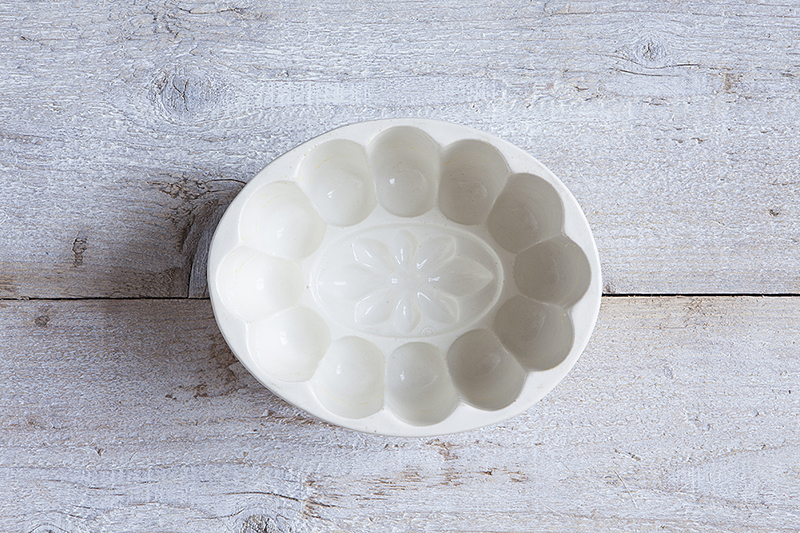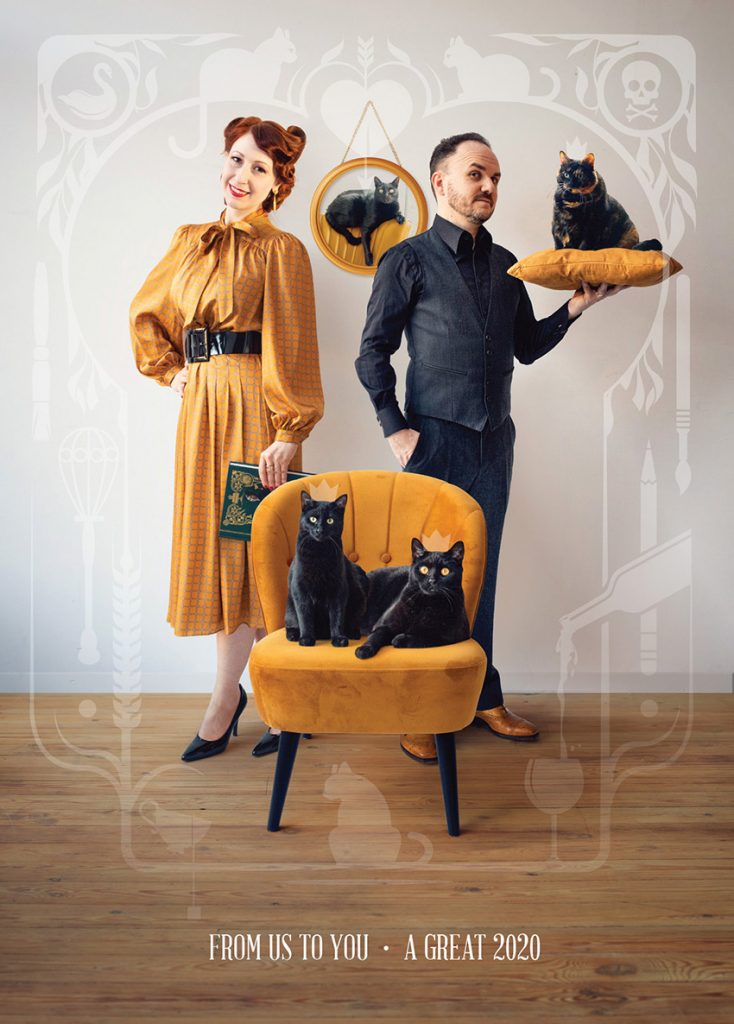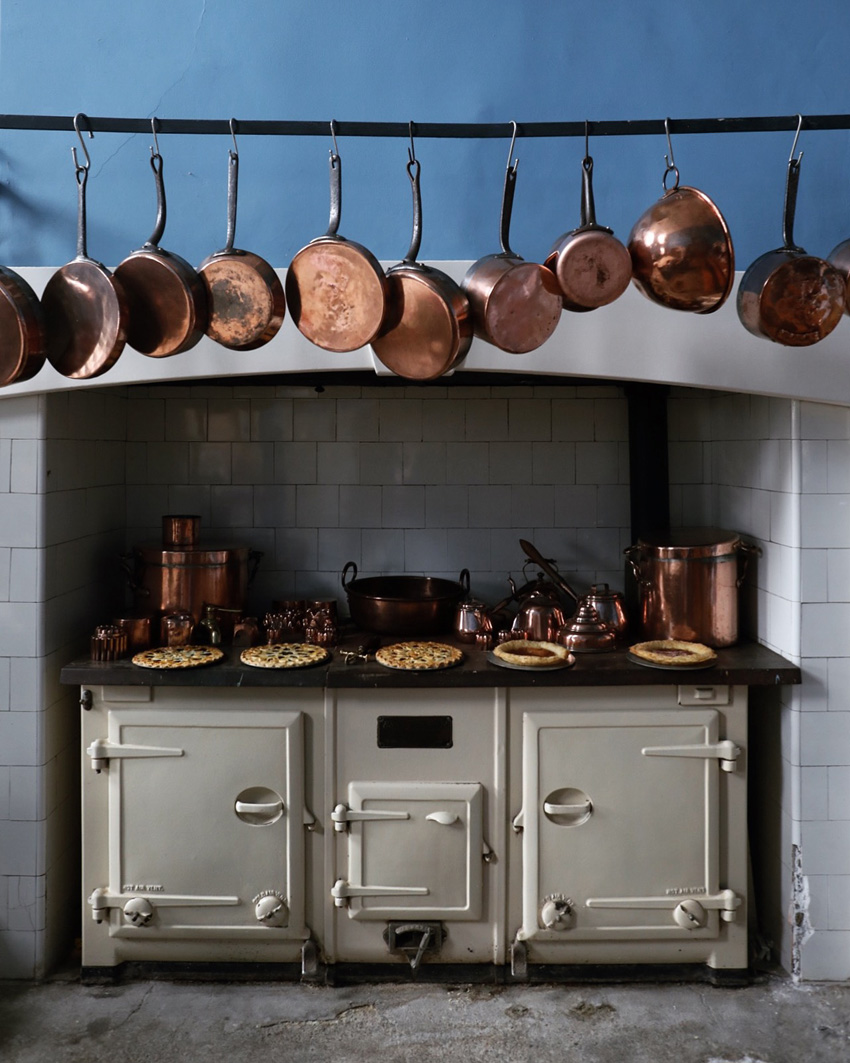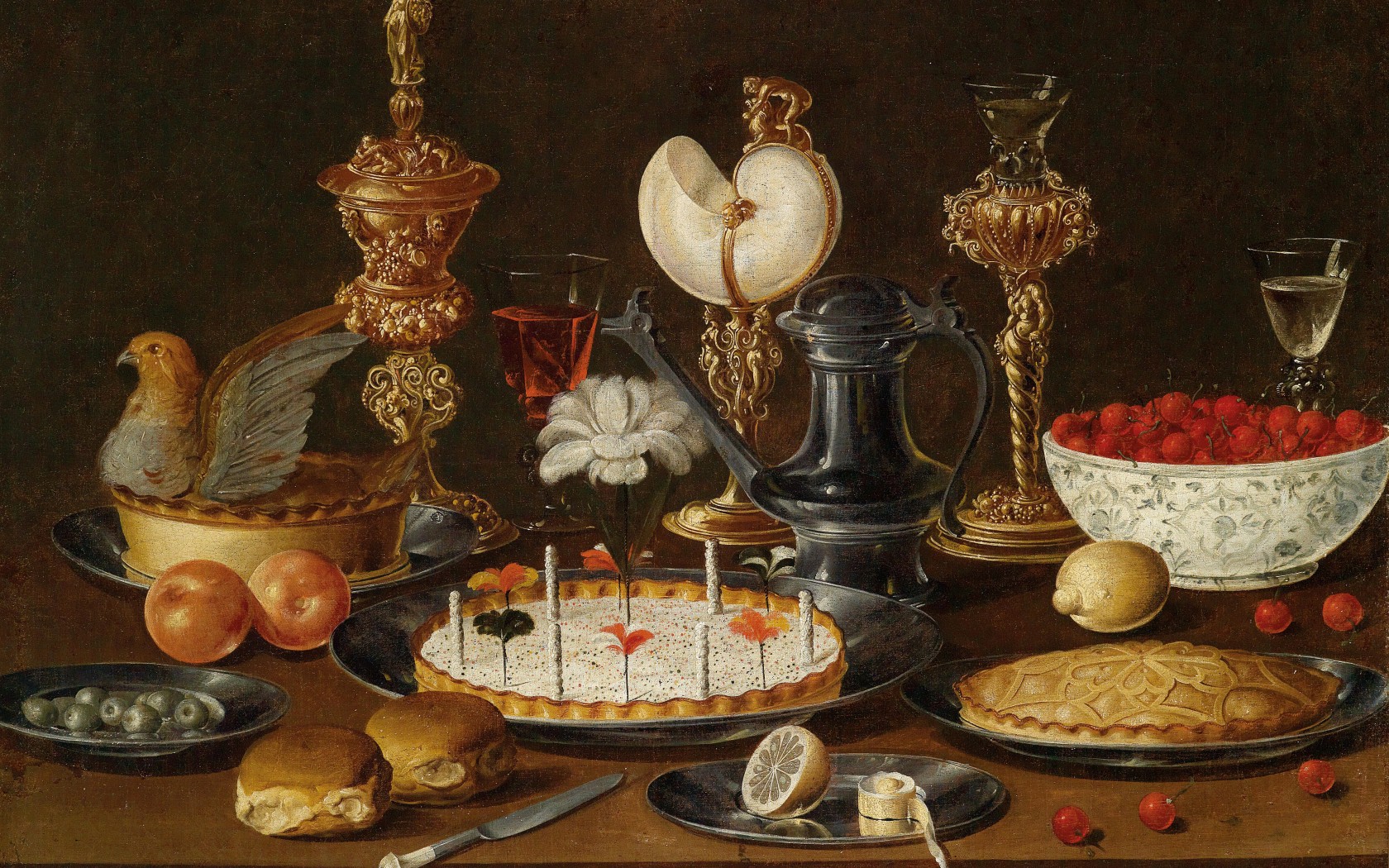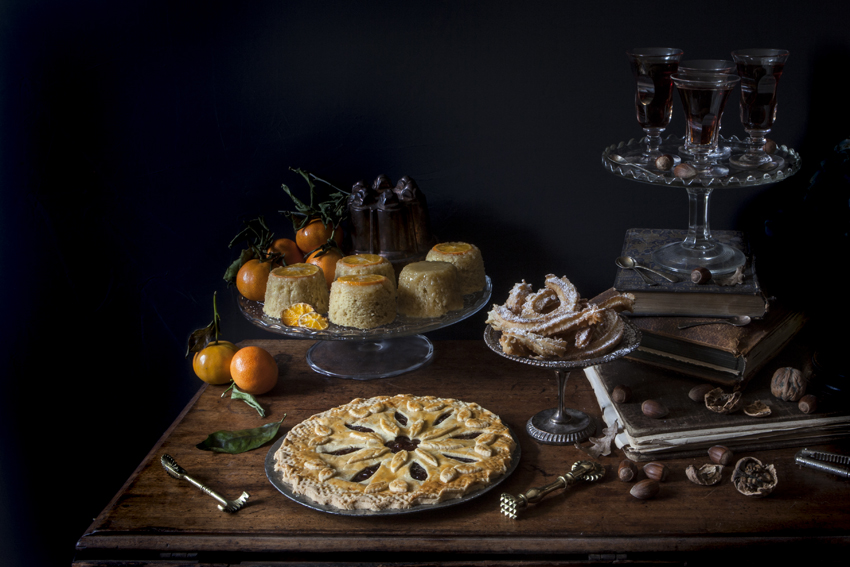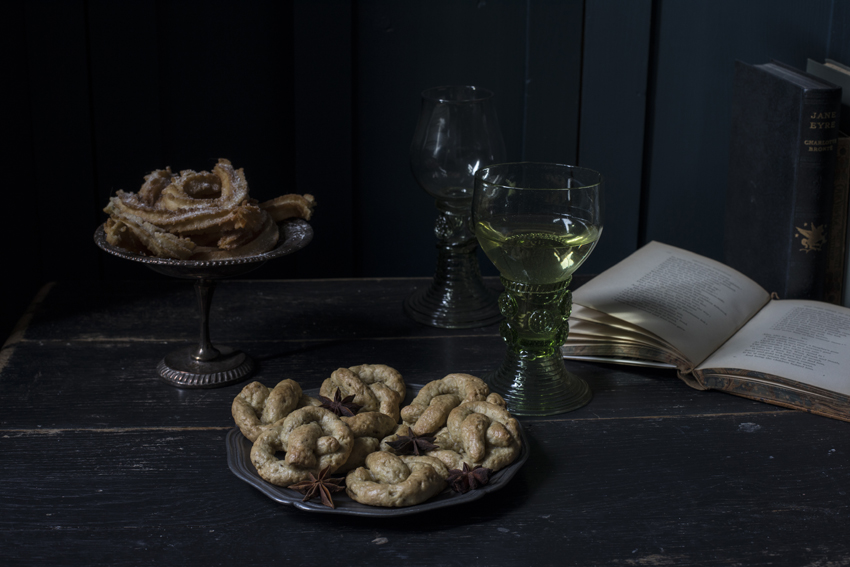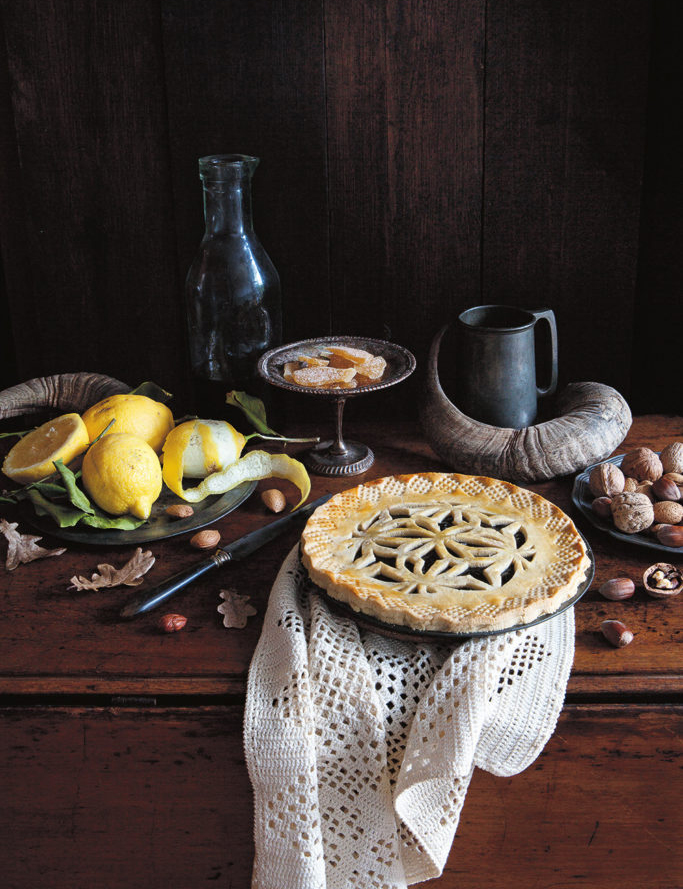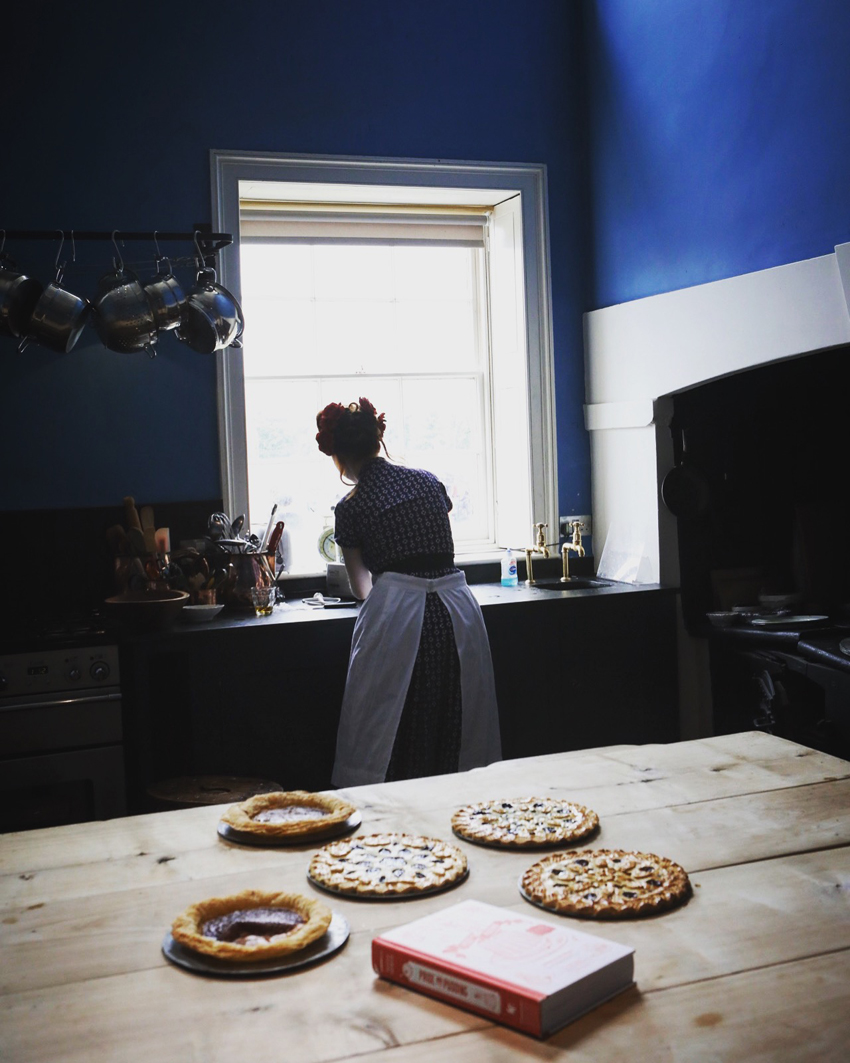The post Jaune Mange appeared first on Miss Foodwise.
]]>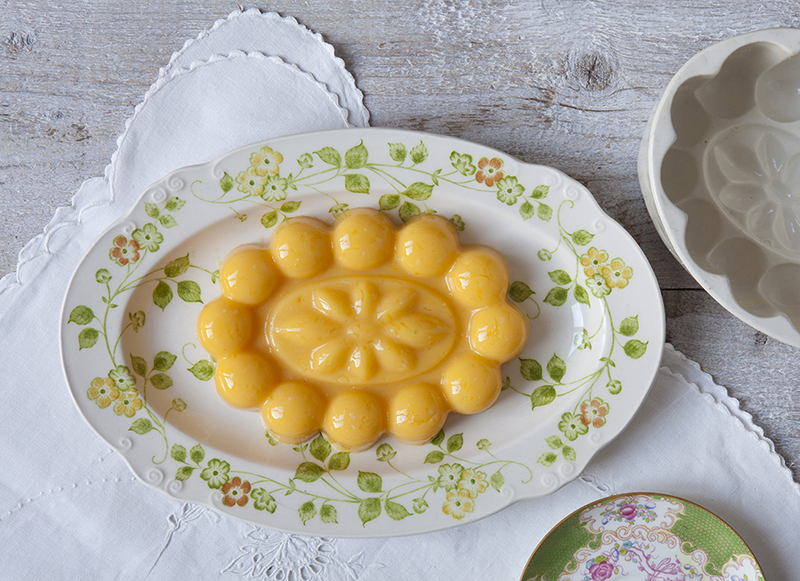 Jaune Mange jelly is the yellow sister to the ancient delicacy called Blanc Mange which means ‘white food’. It is one of the most international early dishes of European cuisine. From the Middle Ages onwards the name of this dish in its various forms – blanc mange, blanc manger, blamange, manjar branco, biancomangiare – can be found in most European cookery books.
Jaune Mange jelly is the yellow sister to the ancient delicacy called Blanc Mange which means ‘white food’. It is one of the most international early dishes of European cuisine. From the Middle Ages onwards the name of this dish in its various forms – blanc mange, blanc manger, blamange, manjar branco, biancomangiare – can be found in most European cookery books.
It is believed by many food historians that the earliest recipe for blancmange dates back to the twelfth century. Two recipes for blancmange also feature in the earliest English cookery text, The Forme of Cury from C1390. By 1395, two recipes for blancmange can be found in the Viandier manuscripts, the first French cookbook: one is a dish for the sick, the other is a multicoloured dish, which is at odds with the name’s literal meaning.
This recipe uses seville orange juice, while others recommend lemon and lemon peel for flavour and colour. Later recipes by J.H. Walsh in The British Cookery Book (1864) instruct the cook to use sherry or ‘raisin-wine’. Because the eggs give this jaune mange a set already, you don’t need to use as much gelatine as you would for a blancmange.`
Jaune Mange
Boil one ounce of isinglass three quarters of a pint of water, till melted, strain it; add the juice of two Seville oranges, a quarter of a pint of white wine, the yolks of four eggs, beaten and strained, sugar to the taste; stir it over a gentle fire till it just boils up; when cold put it into a mould or moulds; if there should be any sediment, take care not to pour it in.
Charlotte Mason, The Lady’s Assistant, 1773
Makes enough for a fancy 400 ml (14 fl oz) mould
What do you need
- 220 ml (7. fl oz) white wine
- 1 teaspoon sugar
- 3 egg yolks
- 4 gelatine leaves
- juice of 2 seville oranges (or plain oranges, it will just be more sweet but not too sweet, don’t worry)
Method
In a small saucepan, bring the wine and sugar to a simmer. In a separate bowl, whisk the egg yolks. Soak the gelatine leaves in the orange juice until soft.
Begin whisking the warm wine mixture into the egg yolks, followed by the soaked gelatine and juice.
Allow to cool but not set, then pour into a mould that you have rinsed and not wiped dry and allow to set for 6 hours or overnight. The smaller the mould, the shorter the setting time.
To unmould, wet one of your hands and use it to loosen the jelly. Allow the jelly to slide out onto a wet plate (if the plate is wet, you can easily move the jelly around if necessary).
From my book ‘Pride and Pudding – the history of British puddings, savoury and sweet’ (Murdoch Books)
Happy new year!
The post Jaune Mange appeared first on Miss Foodwise.
]]>The post Renaissance Tarts – Cooking Class & Talk appeared first on Miss Foodwise.
]]>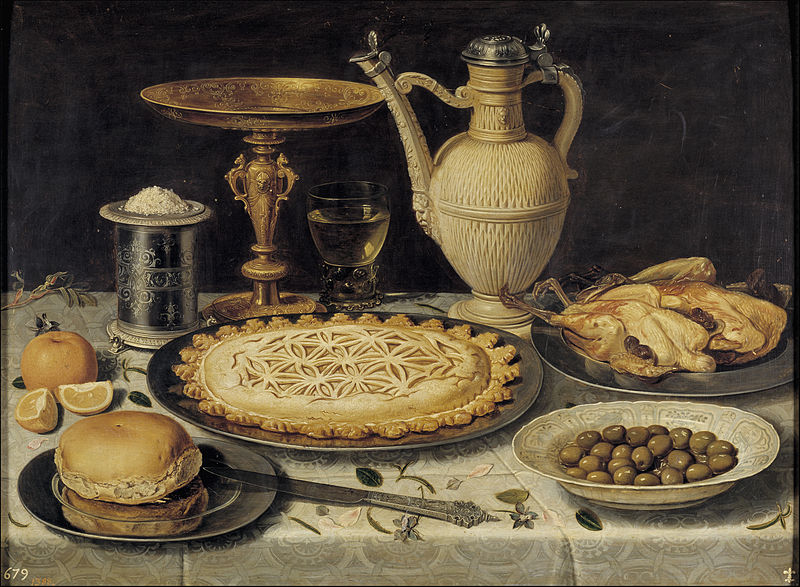
Clara Peeters, Antwerp, 1611
New date for this workshop:
Friday 28 july 2017 – 14h – in the Historical Kitchen of Port Eliot House, St-Germans, Cornwall UK.
Learn about these intricately decorated tarts and their meaning, see how they were made using the original tools.
Growing up in Flanders, Belgium, it feels as if still life paintings have always been a big part of my life. My entire childhood I’ve sat at the dinner table at my parents house, gazing at a dark still life painting with a pumpkin which hung on the wall on the other side of the room. Nothing makes sense in the image, why has the pumpkin such a prominent place on this formal dining table, and why is it on a formal table with china cups in the first place. A pumpkin like this would be more at home in a kitchen scene, on a bare wooden table, ready to be cut, its pips taken out, and the flesh diced for soup or stew.
Mysteries like these in food paintings have always intrigued me. One of my first books was a shabby old artbook with renaissance still life paintings by the Dutch and Flemish masters. All the food in the paintings had such carefully thought out symbolism. Bread indicates humility and catholic faith, a peach means truth and oysters mean lust. A glass of wine with little liquid in it symbolises the fragile nature of life but also wealth. In combination certain fruits and foods can tell a story. A paining with peaches and a butterfly mean hope and faith. Oysters or oyster shells in the vicinity of a woman in a painting means that the woman is promiscuous. If a bun of bread is near, it means she has lost her humility and has given in to the desires of the flesh. Heavy stuff no? An abundance of fish symbolises the catholic faith, but a cat near the fish means doubt, the painting could mean a warning not to take everything for granted when it comes to faith (big lessons to learn here).
But what those still lives also teach us is what people ate in the past and what utensils they used. Clara Peeters (image top page) shows the extraordinary skill of the chef who created that stunning centrepiece of a tart which is finished with a delicately carved pastry lid. This painting shows the best example of a renaissance tart. The tarts I have become infatuated by.
For my workshops I aim to tell you about the traditions and symbolism of these tarts and how to make them. You will learn an old pastry recipe and how to carve the lid using an authentic 18th century tool.
This summer I will be teaming up with Port Eliot festival and I will be teaching a class about these renaissance tarts in the historic kitchen of Port Eliot house. It’s a unique opportunity to cook historical food in a matching kitchen. I’m very excited about this and hope to see some of you there 28 july!
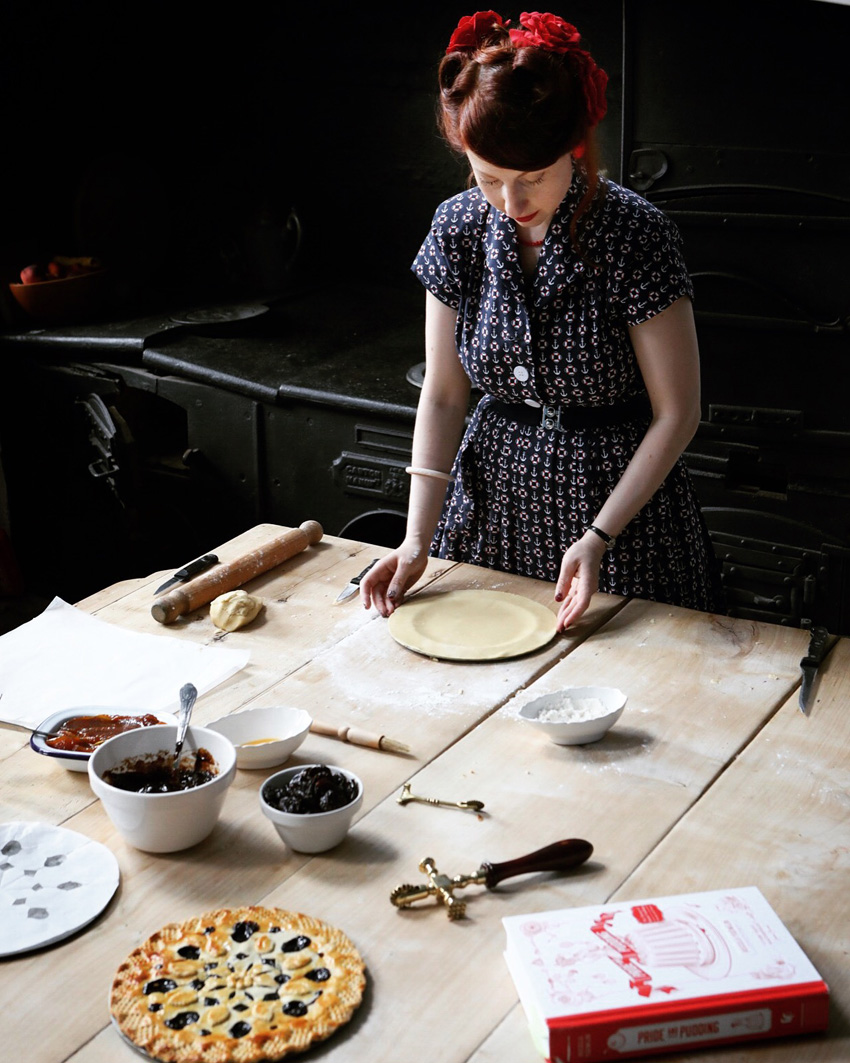
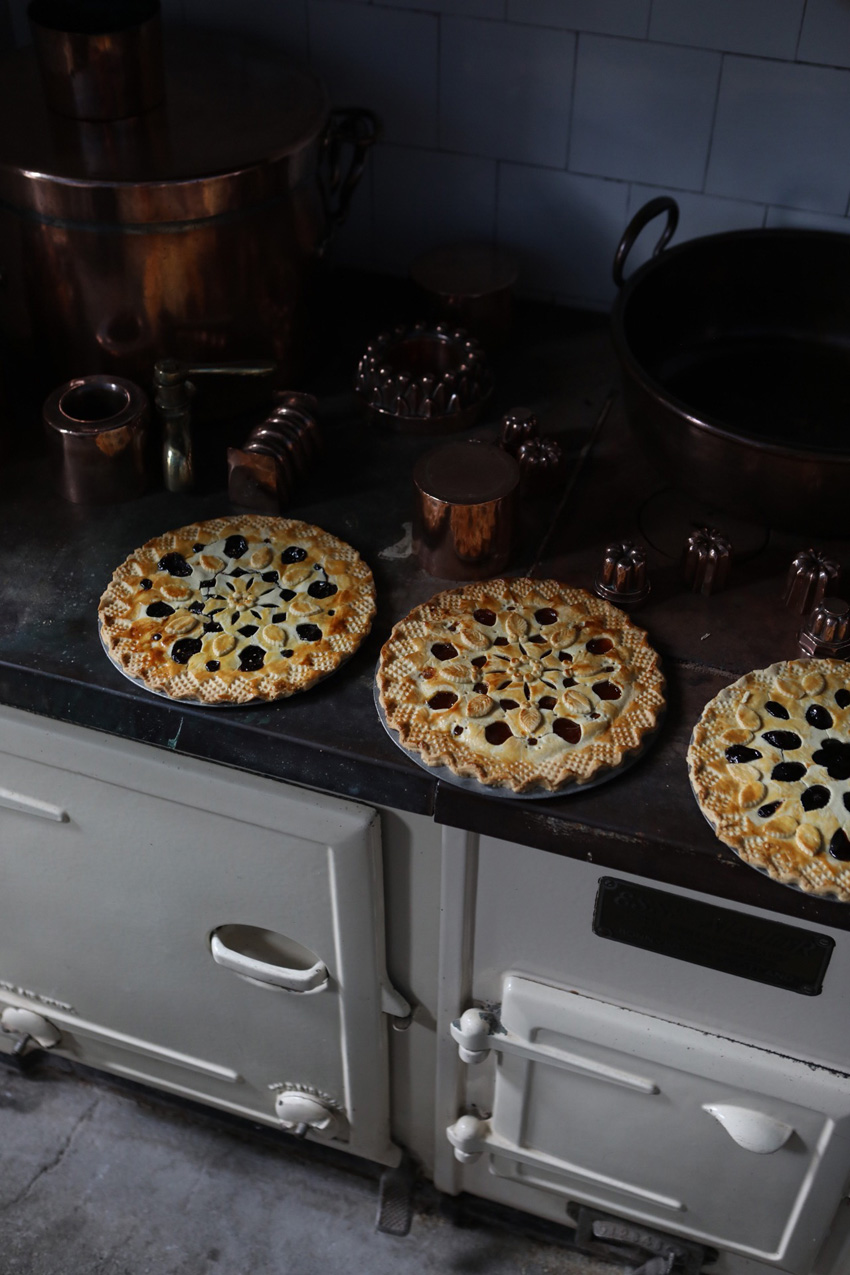 Want me to come and speak/teach at your event or cookery school?
Want me to come and speak/teach at your event or cookery school?
I am available to teach this class wherever you like, get in touch to talk about classes that suit your interest. My most popular classes or talks are Renaissance tarts, historical puddings, and the history of British food.
You might also like this recipe for a quince tart here >
The post Renaissance Tarts – Cooking Class & Talk appeared first on Miss Foodwise.
]]>